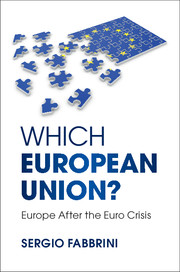Book contents
- Frontmatter
- Dedication
- Contents
- List of boxes
- List of figures
- List of tables
- List of abbreviations
- Preface – How many unions?
- Acknowledgments
- Part I Institutionalization of multiple unions
- Part II Main perspectives on the European Union
- Part III Towards the compound union perspective
- Appendix
- Glossary
- References
- Index
- References
References
Published online by Cambridge University Press: 05 March 2015
- Frontmatter
- Dedication
- Contents
- List of boxes
- List of figures
- List of tables
- List of abbreviations
- Preface – How many unions?
- Acknowledgments
- Part I Institutionalization of multiple unions
- Part II Main perspectives on the European Union
- Part III Towards the compound union perspective
- Appendix
- Glossary
- References
- Index
- References
- Type
- Chapter
- Information
- Which European Union?Europe After the Euro Crisis, pp. 299 - 328Publisher: Cambridge University PressPrint publication year: 2015



